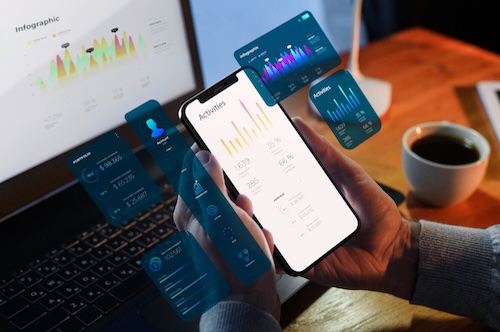Automation is transforming how content creators, agencies, and brands distribute videos on leading platforms like YouTube, Instagram, and TikTok. Manual uploads can be slow, repetitive, and error-prone especially when you’re working across multiple accounts or need to post at optimal times for engagement. By leveraging platform-specific APIs, you can publish content at scale, maintain brand consistency, and optimize timing for maximum reach.
This guide walks you through the possibilities and practical uses of APIs for automated video uploads, explains the technical considerations for YouTube, Instagram Reels, and TikTok, and shows how this automation connects with audience engagement strategies. Whether you’re a brand aiming for a global rollout or a solo creator building a content schedule, understanding these APIs is the first step toward smoother, smarter publishing.
Understanding the Role of APIs in Social Media Publishing
Before diving into each platform, it’s important to understand what an API does in the context of social media content publishing. An API, or Application Programming Interface, allows your system or application to communicate directly with a platform’s backend. In the case of YouTube, Instagram, or TikTok, the API lets you do things like upload videos, set metadata, and schedule releases without logging into the platform manually.
API-based uploads are especially valuable when:
- You have large video libraries to upload in batches.
- You want consistent metadata formatting (titles, tags, descriptions).
- You need integrated workflows with your existing CMS or content scheduling tool.
- You require real-time publishing at specific time zones for different audiences.
By integrating content upload APIs into your workflow, you shift from reactive, manual posting to proactive, automated publishing — freeing up resources to focus on creativity and strategy.
YouTube API Upload: Publishing Videos at Scale
YouTube remains one of the largest content platforms in the world, making automation a key advantage for creators and marketers. The YouTube Data API provides endpoints for uploading videos, managing playlists, and setting video metadata without opening the YouTube Studio interface.
How the YouTube Upload API Works
The YouTube upload API allows you to:
- Upload videos directly from your server or local storage.
- Assign titles, descriptions, and tags programmatically.
- Set privacy levels (public, private, or unlisted).
- Schedule publishing to release videos at a specific time.
By leveraging the API, you can also ensure that all your uploads comply with brand safety requirements — something that can be further enhanced by using GetPhyllo’s Influencer Vetting for Brand Safety to analyze collaborators before publishing content.
Benefits of Automating YouTube Uploads
Automating YouTube uploads provides:
- Time efficiency for high-volume creators.
- Better campaign coordination across multiple content streams.
- Improved metadata consistency, aiding SEO and discoverability.
- Reduced human error in manual uploads.
Example Workflow for YouTube API Upload
Instagram Reels Upload API: Reaching Audiences in Real-Time
Instagram’s Reels have become a powerful way to capture attention quickly. With billions of short videos consumed monthly, brands can’t afford to post manually when speed and timing are key. The Instagram Graph API now supports Reels uploads for business accounts, enabling automation within social media management tools or custom-built platforms.
How Instagram Reels Upload API Works
The Reels upload API enables you to:
- Upload vertical video content directly from your application.
- Add captions, hashtags, and location tags programmatically.
- Schedule Reels to go live at optimal engagement times.
- Track performance metrics post-publish to refine strategy.
When combined with GetPhyllo’s Social Screening, you can ensure the influencers or partners featured in your Reels align with brand safety standards before content goes live.
Why Automating Instagram Reels Upload Is Important
Automated Reels uploads benefit:
- Global brands posting in multiple markets and languages.
- Agencies managing multiple client accounts.
- Creators who pre-produce content and want a fixed release schedule.
TikTok Content Publishing API: Staying Ahead in Short-Form Trends
TikTok thrives on rapid trends and algorithm-driven virality, meaning that timing is everything. The TikTok Content Publishing API allows approved partners to upload videos directly to the platform, bypassing the mobile-only limitation of earlier years.
Features of TikTok Content Publishing API
Using this API, you can:
- Upload videos programmatically from desktop or server environments.
- Set video descriptions and hashtags before publishing.
- Control audience targeting for different regions.
- Publish in sync with trends, even across time zones.
For brands, pairing this with GetPhyllo’s Social Listening API helps identify trending audio, hashtags, and content themes — allowing you to automate uploads in sync with cultural moments.
Comparing Upload APIs Across Platforms
Automation can work differently across YouTube, Instagram, and TikTok. Here’s a high-level comparison:
Best Practices for API-Based Content Uploads
Automation can save time, but it also requires strategic planning to ensure your uploads meet audience expectations and platform standards.
Tips for Successful API Upload Workflows
- Plan a content calendar that maps to release dates in your API scheduler.
- Pre-test your upload scripts to avoid publishing incomplete videos.
- Integrate brand safety checks before upload using vetting tools.
- Monitor post-upload performance and feed the results back into your strategy.
Future of Automated Video Publishing
As social platforms expand their APIs, expect even more capabilities like advanced audience segmentation, AI-generated metadata, and cross-platform publishing from a single API request. The future points to a fully automated pipeline where video production, compliance checks, and publishing happen in one seamless flow.
FAQs:
1. How secure is uploading content via APIs?
API uploads are generally secure if you use official platform APIs with proper authentication like OAuth 2.0. Access tokens should be stored securely, and permissions should be restricted to only the required actions. Large brands often integrate additional monitoring to detect unauthorized uploads, ensuring security at both application and account levels.
2. Can I schedule videos for multiple platforms at once?
Yes, with the right integrations, you can schedule content across YouTube, Instagram, and TikTok simultaneously. This usually requires a middleware application or a custom script that calls each platform’s API, ensuring all uploads are triggered at your desired time for optimal impact.
3. Do APIs allow for bulk uploading?
Yes. For instance, YouTube’s API supports batch uploads where multiple files can be queued and processed sequentially. Bulk uploading is particularly useful for agencies or brands with large content libraries that need to be published in a short timeframe without manual handling.
4. Are there any limitations on file sizes or formats?
Yes, each platform enforces its own restrictions. YouTube supports longer videos with larger file sizes, while Instagram Reels and TikTok focus on shorter content. Always check each platform’s documentation to avoid upload errors due to incompatible formats or oversized files.
5. How can I ensure my automated uploads align with brand safety guidelines?
Integrating brand safety checks before uploading is key. Tools like GetPhyllo’s Influencer Vetting for Brand Safety and Social Screening can scan creators, collaborators, and associated content to identify any potential risks before publishing.
6. Can API uploads be used for private or internal content distribution?
Yes. APIs allow you to set privacy levels such as “private” or “unlisted” so videos can be shared internally before going public. This is useful for training materials, internal announcements, or testing creative assets before a public launch.
7. Do API uploads impact algorithmic performance or reach?
Not inherently. API-based uploads are treated the same as manual uploads in most algorithms. However, consistent posting schedules enabled by automation can indirectly boost reach by signaling reliability to platform algorithms.










.avif)
.avif)
.avif)